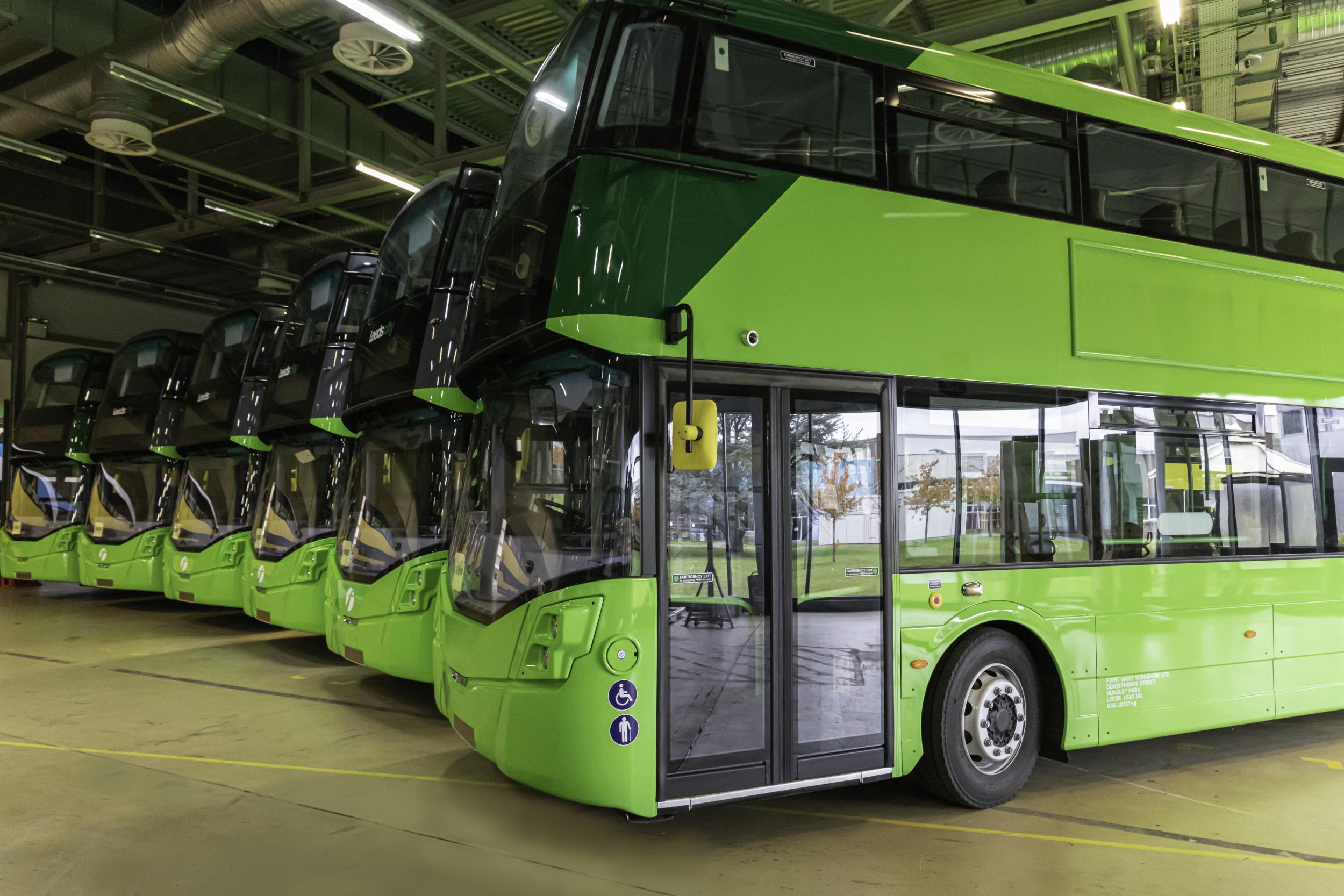Green machine: How hydrogen is powering the right bus for the planet
Next year, Transport for London (TfL) will roll out the gas-powered double deckers across three of its central routes – good news for passengers and those who have to breathe in the capital’s air on a daily basis, says Marcus Roberts

Cities all over the world are setting ever more ambitious targets for carbon neutrality and air quality – often ahead of national and international authorities. London is no exception, and is planning to pioneer cutting-edge technology – the world’s first hydrogen fuel cell double decker buses (single deckers are already on the streets).
These are electric, but unlike battery-powered vehicles that use lithium-ion batteries that require recharging, such as Nissan Leaf, say, the Tesla range or BMW i3, they use a chemical reaction “on board” to create the electricity that powers the motors, so the wheels on the bus go round and round, as the nursery song goes.
Next year, Transport for London (TfL) will roll out the hydrogen double deckers across three of its central routes, with £12m of funding from the city mayor Sadiq Khan.
Incidentally, one of the best new features of the buses will be USB charging points for phones and laptops, making buses more convenient for their users.
The company that will be making the new hydrogen buses for TfL is Wrightbus of Northern Ireland, which went bust this year and has been rescued by Jo Bamford, of the JCB family fame.
Wrightbus made the innovative and distinctive (but not entirely successful) new Routemasters that can still be seen on the streets of the capital – the so-called Boris Bus. By buying the company which makes the buses, Bamford believes he can leverage the expertise of his own company, Ryse Hydrogen, to help decarbonise London’s buses by 2030. Indeed, before Wrightbus went into administration in September, it had been planning to work with Ryse Hydrogen to create London’s first hydrogen-powered double decker.
Ryse is already an important player in this emerging technology. The company says it is on track to become the leading green and affordable hydrogen supplier in the UK, and with the contract to supply TfL with the first hydrogen London buses is on track with the mission to decarbonise the entire UK’s bus fleet within the next decade.
Hydrogen-based propulsion has the advantage over pure battery-powered vehicles because the current generation of lithium-ion batteries require precious materials in finite supply (cobalt and lithium) to make them work. They are also dominated by Chinese ownership of sources of supply, something some observers believe is problematic from the point of view of security of supply.
Hydrogen fuel cells can overcome some of these drawbacks, as well as having the same benefit of all-electric vehicles in driving down emissions and noise levels.
Hydrogen-fuelled vehicles offer similar performance and convenience to conventional petrol and diesel (and indeed battery-powered) vehicles. However, unlike the time-consuming business of having to charge an electric vehicle from the mains, with hydrogen the driver can fill up as quickly and conveniently as they would with fossil fuels. Hydrogen can be energy-intensive to manufacture and transport – but not if it is made locally at a filling station, and from sustainable energy, such as solar power.
Air quality would be a major beneficiary of the new technologies being applied to public transport – and essential to meeting the World Health Organisation’s air quality guidelines by 2030.
A study undertaken by King’s College London and Imperial College London found the capital’s poor air quality leads to around 1,000 London hospital admissions for asthma and serious lung conditions every year. Research commissioned by the mayor of London, has found that, on average, four Londoners are hospitalised every day due to asthma caused by air pollution. Ella Kissi Debrah, a nine-year-old girl, died in 2013 from an asthma attack linked to pollution from vehicles. She lived just 25 metres away from London’s busy South Circular Road.
Carbon dioxide from cars, buses and other transport traps heat in the atmosphere, preventing it from escaping from the Earth, adding to climate change and more severe weather patterns – hurricanes, floods, droughts and so on.
Jo Bamford explains: “The transport sector is the highest carbon emitter in the UK, with radical reductions needed to reach net zero emissions by 2050. Hydrogen technology is an important part of the solution.
“It can be deployed at scale and is the quickest and easiest route to decarbonising transport while also improving air quality in our towns and cities. We need to seize this opportunity and do all that we can to ensure that the UK continues to lead the way in hydrogen technology.”
Subscribe to Independent Premium to bookmark this article
Want to bookmark your favourite articles and stories to read or reference later? Start your Independent Premium subscription today.

Join our commenting forum
Join thought-provoking conversations, follow other Independent readers and see their replies